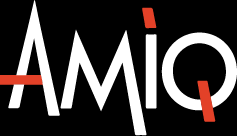About AMIQ EDA
AMIQ EDA provides software tools that enable hardware design and verification engineers to increase the speed and quality of new code development, simplify legacy code maintenance, accelerate language and methodology learning, and improve source code reliability.
AMIQ EDA was founded in 2008 and has a team of 35+ R&D engineers. Our solutions have been adopted worldwide by 150+ companies in 35+ countries. All Top 10 Semiconductor suppliers use our software to improve productivity and reduce time to market.
We build solutions based on real life experience. AMIQ EDA is a spin-off from AMIQ Consulting, which was founded in 2003 as a high-quality design and verification services company. During our consulting work we encountered three recurring challenges: developing new code to meet tight schedules, understanding legacy or poorly documented code, and getting new engineers up to speed quickly. In the software world, Integrated Development Environments (IDEs) are commonly used to overcome such challenges. At the time, no IDE was available for hardware design and verification languages such as Verilog, VHDL, e, and SystemVerilog.
In 2005, we seized the opportunity and started to develop an IDE for our internal use, and in 2006 we launched the beta version. Excellent feedback led us to invest more and more resources. In 2008 we decided to spin off AMIQ EDA and launched DVT Eclipse IDE. In 2011 we launched DVT Debugger, in 2012 we launched Verissimo SystemVerilog Linter, in 2014 we launched Specador Documentation Generator, and in 2022 we launched DVT IDE for Visual Studio Code.
We strongly believe in user-driven development and we are committed to properly understanding and promptly solving user requirements. Customer support plays an essential role in our everyday work – see the testimonials.







Comments
There are no comments yet.
You must register or log in to view/post comments.